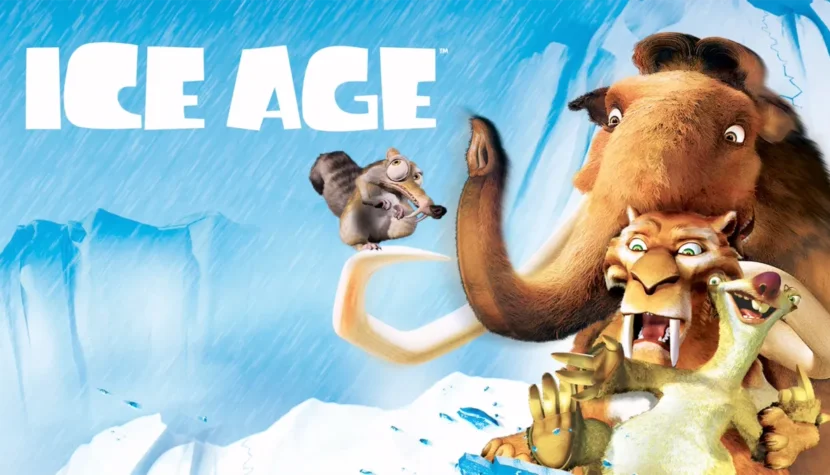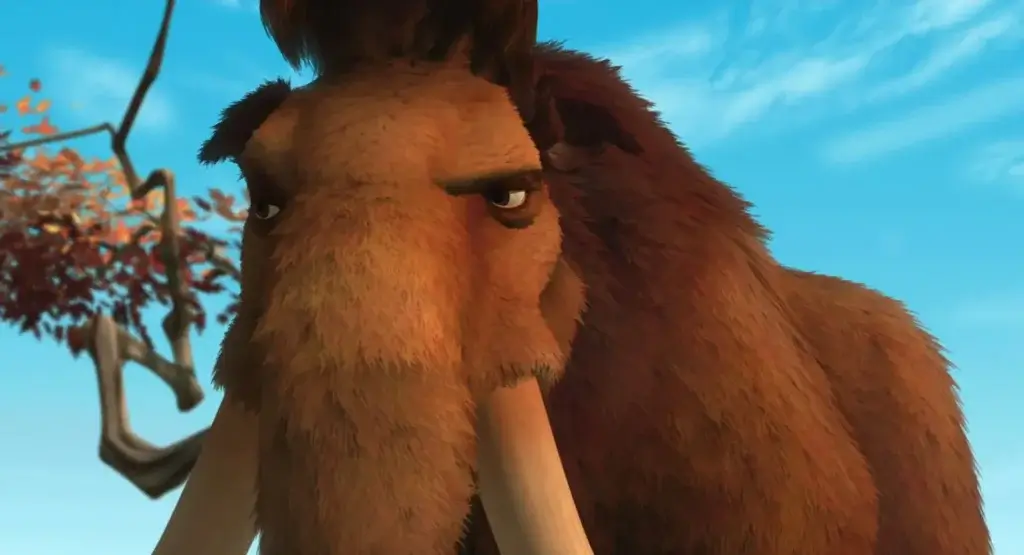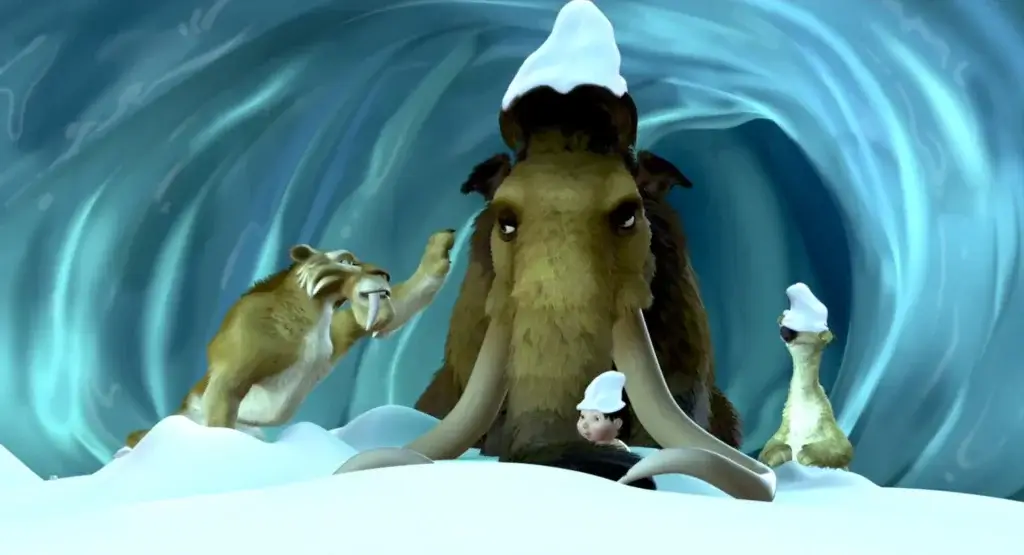ICE AGE. Now it comes across as almost intimate cinema

Compared to contemporary animated films, the first “Ice Age” comes across as almost intimate cinema. It focuses on character design rather than flashy staging and visual spectacle. The monotonous snowy landscape and endless steppes evoke a sense of loneliness and emptiness, indicating a pivotal moment—not only in the context of global climatic changes but also in the lives of the creatures inhabiting the Earth twenty thousand years ago.
Before Blue Sky Studios’ animation truly gets underway, we are treated to a series of loosely connected gags and micro-scenes. This includes the film’s digressive leitmotif: the recurring failures of a certain squirrel in its pursuit of an elusive acorn. However, these moments draw attention to a very important event—the migration of animals in search of areas where survival will be easier. From the numerous characters passing through, the creators bring three to the forefront, each behaving in a slightly different way. They stand out from their herd or are completely without one. Yet, they are stubborn and determined, traits that prove stronger than their natural instincts. Harsh weather conditions won’t break their moral backbone, and the illogic of their actions becomes the foundation for genuine friendship. However, “Ice Age” wouldn’t have been so successful if it could be confined to such a simplistic moral. This is a film that delves a little deeper.

Chris Wedge’s animation interestingly tackles the theme of loneliness, expressed in various ways. Manfred finds himself in this situation through no fault of his own. He seems to be the last of his kind in this territory. His massive size isolates him from the animals around him, and he shows no interest in anyone nearby. His developed introversion serves as a protective barrier from interacting with others. Manfred is aloof and inaccessible, proudly marching forward, ignoring everyone. In stark contrast is Sid the sloth, an annoying chatterbox with an irritatingly high level of energy. His situation seems even sadder, as he’s been abandoned by his family—not for the first time, but this time successfully. Even his closest relatives couldn’t stand his company.
Diego, meanwhile, is in a different predicament. He’s been given a challenge by the leader of his pack: the saber-toothed tiger must capture a human infant and bring it to Soto, who plans to eat it alive as an act of revenge against a tribe of early humans. However, the child ends up in the hands of the caring Sid and the accompanying Manfred. Sid immediately decides that the defenseless baby must be returned to its parents. Diego joins them, offering to help track down the humans. Initially, he plans to deceive them, but as the journey progresses, he begins to feel empathy toward the two outcasts and sheds his calculated behavior. In doing so, he distances himself from Soto, and his predatory nature slowly changes. Diego grapples with an ethical dilemma, torn between which path to follow and whom to remain loyal to, leaving him isolated and conflicted, alienated from both sides.
The creators of “Ice Age” focus primarily on building an engaging conflict between the trio of protagonists, exploring the clash of their personalities and understanding their seemingly opposite motivations. Chris Wedge manages to find a common denominator for all three: a shared and deeply desired value—the need to belong to a group, to be trusted.

“Ice Age” brings together contrasting personalities and temperaments in a way reminiscent of DreamWorks’ “Shrek” or Pixar’s “Monsters, Inc.”. And here, the formula works very well. However, “Ice Age” operates with a slightly cooler atmosphere and more restrained drama. The characters tend to suppress their genuine emotions and selfless gestures. The film’s minimalist visual style gives Blue Sky Studios’ production its own unique identity.
Wedge’s animation is crafted with heart and sensitivity, entirely focused on the characters and the relationships between them. I also appreciate that the creators avoided the postmodern playfulness with the audience that was so fashionable when “Ice Age” was made. Blue Sky Studios’ production is a self-contained film, not reliant on constant references and allusions to other works. This makes it fully accessible to younger viewers, engaging them with its story rather than a barrage of cultural references. This is exactly the kind of family cinema we need.

